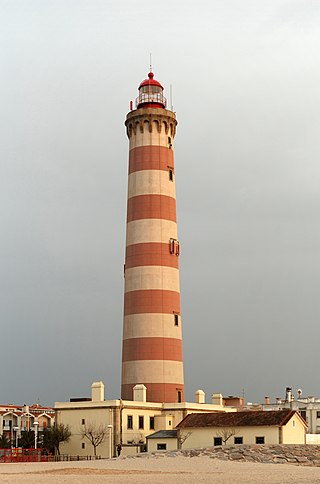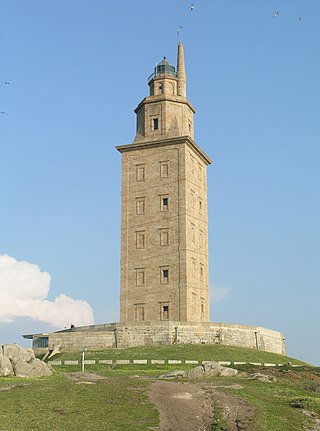
A Bude-Light was a very bright oil lamp (later, in its modified form, a gas lamp) invented by Sir Goldsworthy Gurney, patented by him on 8 June 1839 and named after Bude, Cornwall, where he lived.

A Bude-Light was a very bright oil lamp (later, in its modified form, a gas lamp) invented by Sir Goldsworthy Gurney, patented by him on 8 June 1839 and named after Bude, Cornwall, where he lived.
As first developed, the light worked by introducing pure oxygen into the centre of an Argand burner. It was claimed to be a cheap way of producing a bright light: the unburned carbon in the oil flame burned incredibly brightly and an intense, white light was produced from the weak yellow flame of the oil lamp. In 1838, Gurney reported the results of his initial tests to Michael Faraday, who recommended the proposal to Trinity House for possible use in lighthouses. It was trialled on an experimental basis in Orford Low Lighthouse in 1839, where its flame was observed to be 2.5 times as powerful as a flame of the same size on a conventional oil lamp; its use in lighthouses was not pursued, however, due to high running costs. [1]
The chair of the parliamentary lighthouse committee, however, Joseph Hume, was involved in the reconstruction of the Palace of Westminster at the time and saw a potential opportunity for their use there. [2] In May 1839, he presented his lamp to a select committee of the House of Commons; subsequently their use was trialled in the temporary Chamber of the House of Commons [3] [4] (at the time the Chamber was unsatisfactorily lit by large numbers of 15-inch candles, earlier experiments with both Argand lamps and gas lighting having thus far failed). [2]
Gurney had claimed (and already demonstrated) that his Bude-Lamp would cost the same to manufacture as a similarly-sized Argand lamp, and yet would produce a light more than twice as powerful while burning a quarter as much oil. There were setbacks during the trials, however: it proved difficult to trim the wicks satisfactorily, without interrupting debates, and managing the flexible tubes which provided the oxygen feed further complicated this procedure. Moreover, obtaining pure oxygen (which Gurney had sought to source from Manganese being mined in Devon and Cornwall) proved to be less straightforward and much more expensive than first thought. [2]
He therefore began to modify his design, convinced that, by doing so, he would be able to create an 'Atmospheric' Bude-Lamp: by substituting air for oxygen with little detrimental effect. To eliminate the need for maintaining a wick, he explored using coal gas in place of oil. He purified the gas, and impregnated it with vapours of naphtha, turpentine and India rubber; this was then fed through a set of concentric burners designed 'to communicate by conduction and radiation sufficient heat to raise the temperature of the gas to a given point, so as to effect the separation of its charcoal immediately on its leaving the burner, and then […] to bring fresh atmospheric air to the proper points of the flame'. [5] The chemical changes brought about by this precision mechanical arrangement achieved 'an effulgence adequate to every purpose of internal and external illumination'. [6] Self-regulating Atmospheric Bude-Lamps (enclosed in airtight glass containers, with eduction tubes to remove the fumes and heat) were soon successfully installed in the temporary Commons chamber (and operated 'at a cost of only twelve shillings per night, whereas that of the candles previously used there amounted to six pounds eleven shillings per night'); [6] and indeed their use was promptly extended to the parliamentary libraries, lobbies and one of the committee rooms. [2] Gurney went on to market the lamps for use in churches, public buildings, private residences and shops.
Despite his pioneering work in Parliament, however, responsibility for lighting the rebuilt Palace of Westminster was instead divided (for an experimental period) between arch-rivals Sir Charles Barry and Dr David Reid; both their systems proved unsatisfactory, however, and in 1853 Gurney's system was installed. Its effectiveness was proved, to the satisfaction of both the Lords and the Commons, and the following year Gurney was placed in sole charge, not only of the lighting but also of heating and ventilating the entire building. [2] His Bude-Light system stayed in use in the Houses of Parliament for over 50 years.

Four Bude Lights, with octagonal glass lanterns, were installed in Trafalgar Square in London in around 1845. They were at some point converted to electricity, and are still in use. Two, across from the National Gallery, are on tall cast bronze columns, and two, in the south-west and south-east corners of the square, on short cast bronze columns on top of wider granite columns. [lower-alpha 1] They were made by Messrs. Stevens and Son, of the Darlington Works, Southwark, to designs by Charles Barry. [7]

In the small seaside resort town of Bude a commemorative installation, also referred to as the Bude Light, was erected to mark the millennium and remember Sir Goldsworthy Gurney. Designed by Carole Vincent and Anthony Fanshawe, it is lit internally with fibre-optics and has a small seating area positioned around the light.

A Bunsen burner, named after Robert Bunsen, is a kind of ambient air gas burner used as laboratory equipment; it produces a single open gas flame, and is used for heating, sterilization, and combustion.

A lighthouse is a tower, building, or other type of physical structure designed to emit light from a system of lamps and lenses and to serve as a beacon for navigational aid, for maritime pilots at sea or on inland waterways.

A kerosene lamp is a type of lighting device that uses kerosene as a fuel. Kerosene lamps have a wick or mantle as light source, protected by a glass chimney or globe; lamps may be used on a table, or hand-held lanterns may be used for portable lighting. Like oil lamps, they are useful for lighting without electricity, such as in regions without rural electrification, in electrified areas during power outages, at campsites, and on boats. There are three types of kerosene lamp: flat-wick, central-draft, and mantle lamp. Kerosene lanterns meant for portable use have a flat wick and are made in dead-flame, hot-blast, and cold-blast variants.

Limelight is a type of stage lighting once used in theatres and music halls. An intense illumination is created when a flame fed by oxygen and hydrogen is directed at a cylinder of quicklime, which can be heated to 2,572 °C (4,662 °F) before melting. The light is produced by a combination of incandescence and candoluminescence. Although it has long since been replaced by electric lighting, the term has nonetheless survived, as someone in the public eye is still said to be "in the limelight". The actual lamps are called "limes", a term which has been transferred to electrical equivalents.

Gas lighting is the production of artificial light from combustion of a fuel gas such as hydrogen, methane, carbon monoxide, propane, butane, acetylene, ethylene, coal gas or natural gas. The light is produced either directly by the flame, generally by using special mixes of illuminating gas to increase brightness, or indirectly with other components such as the gas mantle or the limelight, with the gas primarily functioning as a heat source for the incandescence of the gas mantle or lime.

North Foreland is a chalk headland on the Kent coast of southeast England, specifically in Broadstairs.

The history of lighthouses refers to the development of the use of towers, buildings, or other types of structure, as an aid to navigation for maritime pilots at sea or on inland waterways.

The Argand lamp is a type of oil lamp invented in 1780 by Aimé Argand. Its output is 6 to 10 candelas, brighter than that of earlier lamps. Its more complete combustion of the candle wick and oil than in other lamps required much less frequent trimming of the wick.

Sir Goldsworthy Gurney was an English surgeon, chemist, architect, builder, lecturer and consultant. He was a prototypical British gentleman scientist and inventor of the Victorian era.

South Foreland Lighthouses are a pair of Victorian lighthouses on the South Foreland in St. Margaret's Bay, Dover, Kent, England, used to warn ships approaching the nearby Goodwin Sands. There has been a pair of lighthouses at South Foreland since at least the 1630s. Even after the decommissioning of the Lower Lighthouse the pair continued to be used as leading marks, with Admiralty charts into the 20th century indicating that the 'Lighthouses in line lead south of the Goodwin Sands'.

Carl Friedrich Julius Pintsch was a German tinsmith, manufacturer and inventor who is primarily known for the invention of Pintsch gas. The gas, distilled from naphtha or other petroleum products, was widely used in railway transport and marine navigation applications from its invention in 1851 until the 1930s.

Barcelona Light, also known as Portland Harbor Light, is a lighthouse overlooking Barcelona Harbor on Lake Erie in the Town of Westfield, New York.

Cromer Lighthouse is situated in the coastal town of Cromer, in the English county of Norfolk.
The Lewis lamp is a type of light fixture used in lighthouses. It was invented by Winslow Lewis who patented the design in 1810. The primary marketing point of the Lewis lamp was that it used less than half the oil of the prior oil lamps they replaced. The lamp used a similar design to an Argand lamp, adding a parabolic reflector behind the lamp and a magnifying lens made from 4-inch-diameter (100 mm) green bottle glass in front of the lamp. A similar variant using a parabolic reflector was created by the inventor of the Argand lamp, Aimé Argand. While the Argand variant became widely used by European lighthouses, the Lewis lamp design was selected by the United States for use in American lighthouses.

Hurst Point Lighthouse is located at Hurst Point in the English county of Hampshire, and guides vessels through the western approaches to the Solent.

The Carcel lamp was an efficient lighting device used in the nineteenth century for domestic purposes and in France as the standard measure for illumination.

Lowestoft Lighthouse is a lighthouse operated by Trinity House located to the north of the centre of Lowestoft in the English county of Suffolk. It stands on the North Sea coast close to Ness Point, the most easterly point in the United Kingdom. It acts as a warning light for shipping passing along the east coast and is the most easterly lighthouse in the UK.

The moderator lamp is a type of 19th century oil lamp. It displaced the more complex Carcel lamp which used a clockwork pump. Its mechanism was simpler and required less maintenance or repair. The moderator lamp was invented in 1837 by Charles-Louis-Félix Franchot (1809-1881). Like the Carcel lamp the oil reservoir was below the burner and it allowed 360 degree illumination. Earlier oil lamps such as the Argand had a reservoir above the burner which made them top heavy and obscured some of the light. The reliability of the mechanism led to them being adopted in lighthouses.

Scarborough Pier Lighthouse is an active aid to navigation on Vincent Pier in Scarborough, North Yorkshire, owned and operated by Scarborough Borough Council. The lighthouse dates from 1806, but it had to be rebuilt following damage sustained in the German bombardment of 1914.